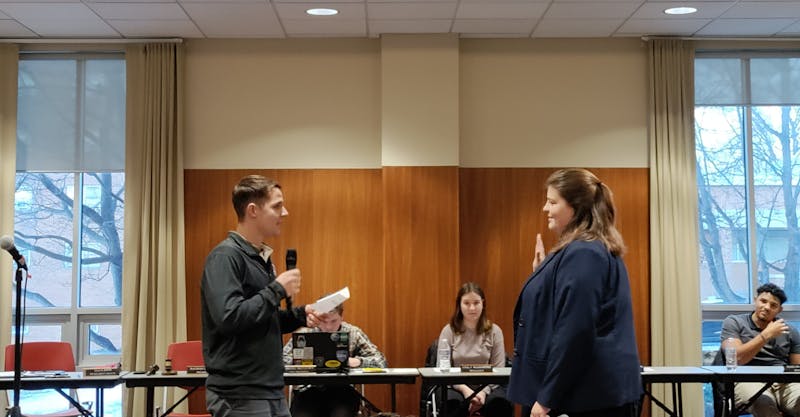Mark Sachleben gave a presentation about dehumanization and genocide during Shippensburg University’s annual Day of Human Understanding on March 5.
His presentation contained three parts: The definition of genocide, the eight stages of genocide, and his recommendations on how the world and society can understand and possibly prevent genocide.
According to Sachleben’s research, genocide is not random.
It takes a lot of time and planning.
There are more concentration camps in the world than of which people are aware.
Genocides can last from 90 days to 12 years, Sachleben explained.
Examples of different genocides are the Holocaust and those in Rwanda, Armenia and Cambodia.
Sachleben provided background on what took place during a few genocides. During the Holocaust, 6 million Jews were killed along with 5 million other people. People were killed due to race, religion, ethnicity and physical traits.
In Rwanda, 800,000 to 1 million people were killed. The Rwandan genocide happened three to four times faster than the Holocaust because Rwanda’s genocide lasted 90 days while the Holocaust lasted 12 years.
“It’s crazy to think about. So many people died in such a short amount of time,” said Alexis Kasun, a sophomore social-work major at SU.
Sachleben gave two definitions of genocide.
The first was a legal definition, which are acts committed in an attempt to destroy a group.
The academic definition is when perpetrators define a group and then destroy that group.
Sachleben then explained the eight stages of genocide, which include classification, symbolization, dehumanization, organization, polarization, preparation, extermination and denial.
Dehumanization, the attempt to rob people of their humanity, must be reached in order to obtain genocide.
In the final part of Sachleben’s presentation, he explained how people can understand and prevent genocide with four recommendations — recognize that groups are sometimes unfairly characterized, interact with people of different cultures, do research and speak out against genocide.
“Genocides occur when people are unwilling to do or say anything,” Sachleben said in ending his presentation.




The Slate welcomes thoughtful discussion on all of our stories, but please keep comments civil and on-topic. Read our full guidelines here.